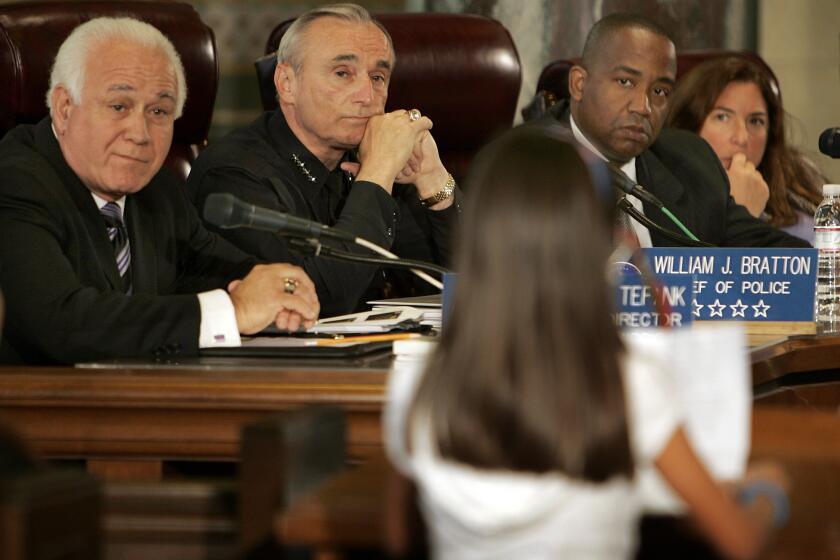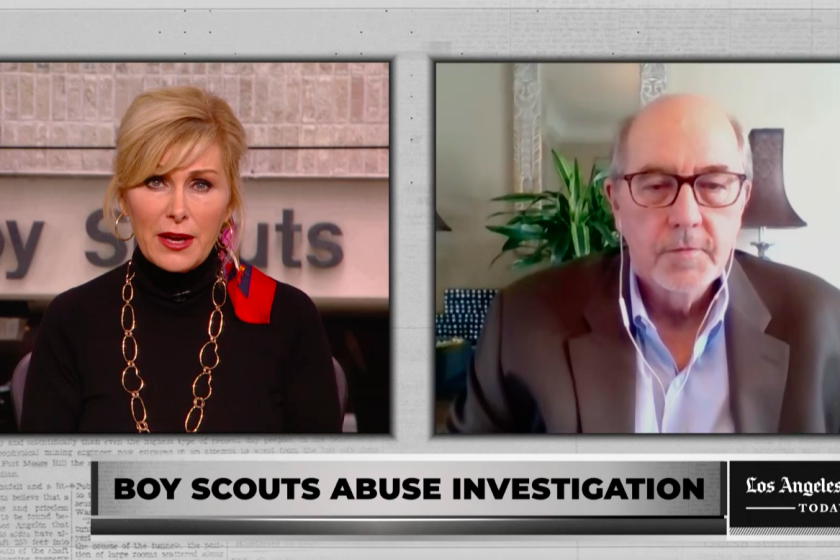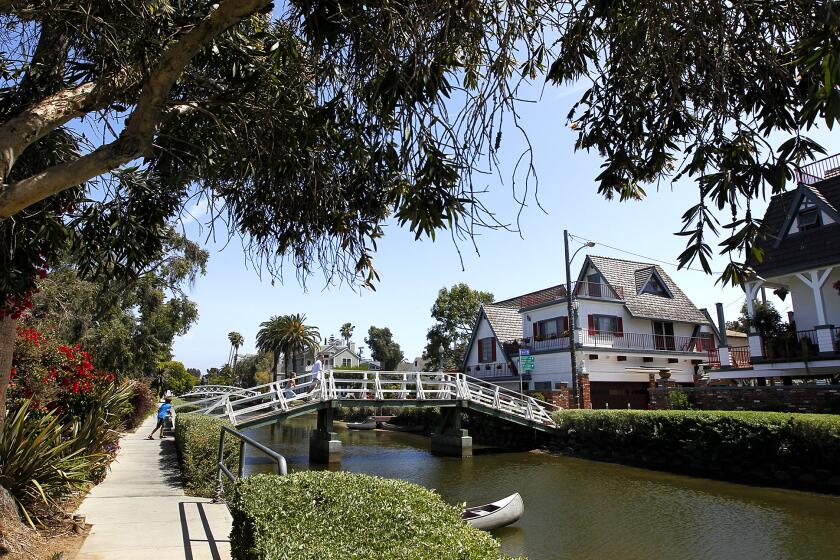Landscaping plan for L.A. City Hall is slow going
Occupy L.A. protesters planned to leave their mark on City Hall’s park with graffiti declarations and treehouses when they were evicted in late November. Instead, they left behind a park stripped of its lush north and south lawns, creating a financial and planning burden for the city and a waiting game for the displaced farmers market that has held sway every Thursday.
But in a way, the land is a blank canvas for the city’s Recreation and Parks Department, which must decide how to landscape a bit more than 1.7 acres of now-barren soil.
Paul Verger, a systems analyst who has worked at City Hall for 21 years, presumes grass will be the choice.
“There’s no extra budget to do anything fancy,” he said as he passed the area, currently surrounded by a tall chain-link fence.
Suggestions have been coming in and include recommendations from the California Native Plant Society and the Theodore Payne Foundation, which promotes the use of native plants.
Michael Shull, superintendent of planning, construction and maintenance for Recreation and Parks, said the choices are down to three.
The first “low-fanfare” option would be to plant grass, he said. The second would be to incorporate more drought-tolerant and California native plants while maintaining a sizable lawn for public events. The third — and biggest departure — would be to incorporate native plants throughout and keep the grassy area to a minimum.
Shull said new sod would be the least expensive option, but Snowdy Dodson, president of the Los Angeles chapter of the California Native Plant Society, disagrees. The upfront cost of grass would be relatively low, but the subsequent maintenance, re-sodding and fertilizer can get expensive, she said.
Dodson said the second option makes the most sense.
“If you need a grassy spot for the mayor to stand on, that is not a bad idea,” she said, though she prefers all native plants.
Dodson would recommend starting with an array of sages, buckwheats and toyon — an evergreen bush that grows red berries, also known as California holly.
“With the proper maintenance, native plants don’t look ratty,” she said. “They hate pesticides and only need a little trimming in the fall.”
The cost of planting native grasses could run from $5 to $7 a square foot, said Cassy Aoyagi, owner of FormLA Landscaping in Tujunga and president of the Theodore Payne Foundation. The park’s lawns covered about 75,000 square feet.
Her estimate includes grading, mulching, retrofitting the irrigation system, and planting a grass like Carex pansa, which looks like traditional turf if it’s mowed, she said.
Having more native plants and a completely new irrigation system could cost $8 to $12 a square foot, she estimated. Traditional turf would average about $3 a square foot, she said.
“Every situation is unique,” she cautioned, adding that she hasn’t examined the area.
Aoyagi said Carex pansa or similar alternatives usually come in plugs, which would take three to six months to fill in the area.
“The establishment period is longer than with traditional turf,” Aoyagi said. If an event similar to Occupy L.A. were to occur, she said, the grass would rejuvenate itself with minimal help.
The Recreation and Parks Department is scheduled to present the three concepts to the Downtown Los Angeles Neighborhood Council on Jan. 10, initiating a marathon of meetings needed before planting can begin.
“It’s all conceptual,” Shull said. “It really could be any combination of these alternatives. We want to allow people to provide their feedback.”
Shull expects to make adjustments to the proposals before taking them to the city’s Arts, Parks and Neighborhoods Committee later in January, and then the Cultural Heritage and Recreation and Parks commissions.
More problematic, though, is that Recreation and Parks still has to secure funding. According to a city report, the two-month Occupy L.A. encampment cost the city at least $2.35 million, not counting repairs to the lawns.
Shull said the planning has to “go slow to go fast.”
For the displaced vendors at the farmer’s market, it’s been a snail-like crawl.
Thierry Wariner has been selling his whole wheat, organic French pastries every Thursday on the south lawn for five years. Now his tables occupy the sidewalk on Main Street, and sales were slow before the holiday break.
“I’m not angry or sad,” the co-owner of La Boulangerie Bread LA said. He doesn’t mind the new location as much as he misses the clientele.
“Now we have 40% less business,” he said. “It’s hard.”
Some vendors want the park to reopen by March. Maria Curiel, of Curiel’s Mediterranean Greek Cuisine, said the plaza above the L.A. Mall is pretty, but the location has cost her 70% of her customers.
It is a physical burden too. “We have to bring everything upstairs. It’s more work for the guys,” she said, placing a hand on her lower back. “That sink is very heavy.”
Shull acknowledged the sacrifices made by the vendors and is keeping them in mind but said the approval process has to be followed.
“Whatever the south lawn was used for, we would still want to use it for. It’s important for a civic center to have those events,” Shull said. “If it was just maintenance, we wouldn’t have to do all this. The process isn’t any different than doing this in a park or a historical monument.
“It’s City Hall,” he said. “It’s going to get a lot of attention. It’s everything to some people.”
dalina.castellanos@latimes.com
More to Read
Start your day right
Sign up for Essential California for news, features and recommendations from the L.A. Times and beyond in your inbox six days a week.
You may occasionally receive promotional content from the Los Angeles Times.






